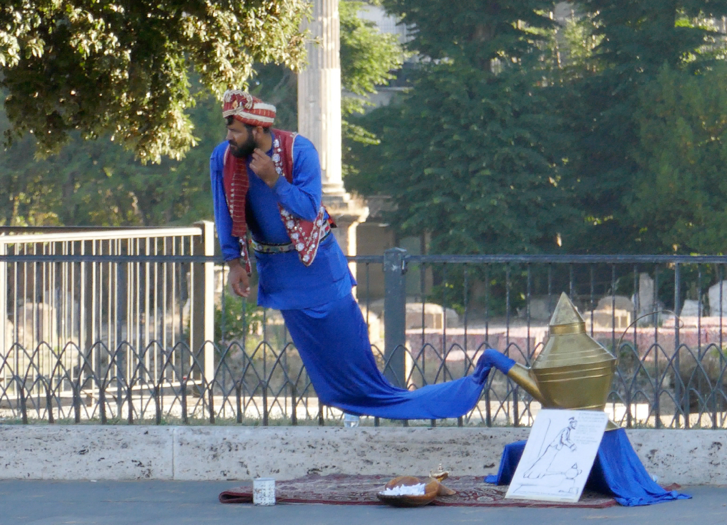My wife and I were sitting down to lunch in Greece at a rooftop restaurant shaded by a vined trellis. It was summertime, about 90 degrees F. Sweat dotted my forehead. Dogs lay on their sides in the road then lumbered onto all fours and ambled away lazily, without purpose. The numerous feral cats were hot, too; they showed up wherever table scraps might be shared.
I had not expected any of these behaviors on my travels to Rome and Greece as research for my historical fiction novel. I took copious notes on these animals-turned-professional-beggars. They were persistent, yet well-behaved: the cat by my chair gently pawed not my pant leg, but rather, the seat edge, to make sure I knew what it wanted.
A Sparrow Joins in the Act
It took almost no time at all for a sparrow to join the act. It landed on the roof’s ledge, which our table pressed against. The bird and my full plate were no more than two feet from each other, but the bird pretended not to notice my plate, and I tried not to notice the bird.
Then, astonishingly, the sparrow alighted from the ledge and hovered in front of me, like a hummingbird, over the far edge of my plate. It flew back to the ledge, but again returned, its wings flapping furiously in my face. It did this at least half a dozen times. Unfortunately, by the time I tried to take a picture, it gave up on me and left.
 These were beggars, but they weren’t the beggars I’d learned about in my novel research. I’d been looking into the lives of beggars living in first-century Rome to better understand one of my main characters. Books such as SPQR: A History of Ancient Rome, The Ancient Roman City, and Everyday Life in Ancient Rome, as well as accounts by historians Tacitus, Josephus and Suetonius make it clear human beggars abounded. What I hadn’t seen discussed were the animals.
These were beggars, but they weren’t the beggars I’d learned about in my novel research. I’d been looking into the lives of beggars living in first-century Rome to better understand one of my main characters. Books such as SPQR: A History of Ancient Rome, The Ancient Roman City, and Everyday Life in Ancient Rome, as well as accounts by historians Tacitus, Josephus and Suetonius make it clear human beggars abounded. What I hadn’t seen discussed were the animals.
Bread and Circus and Birdfeed
The more I watched these street animals and visited ancient sites, the more I realized there must have been animals mooching food in abundance. Our phrase “bread and circus” comes from the Roman policy of providing a daily loaf of bread and free entertainment to every Roman citizen. Approximately half a million citizens living in Rome meant hundreds of thousands of loaves were baked each day. Talk about birdfeed!
So I decided to incorporate the hovering sparrow image in my story to illuminate, with a single image, the persistent beggar culture in the big cities. Hopefully, the image will surprise and stay with my readers the same way it affected me.
The simile occurred to me in part because I was hoping—expecting—to be surprised. I didn’t know what I would find surprising, but I fully expected something. When the moment happened, I snapped its mental impression like a photographer.
Genius Description is in the Details
Annie Weatherwax, the dyslexic author of the novel and movie, All We Had, was a sculptor and painter long before becoming a novelist. She told me she feared writing at first, due to her dyslexia. What she hadn’t counted on, however, was how her heightened artistic powers of observation would help her capture tiny, revelatory details about her characters and their surroundings.
Annie speaks about using exaggeration and caricature, words of color, body language, descriptive scale, focusing on an item, and distorted perspective to convey one’s point. Image-based writing like that doubles down its impact.
As I consider my own writing, I realize much of what Annie said can be interpreted as finding the “surprise” in each character, scene, and environment, and sharing it with the reader. Done well, they will react with the same wide-eyed astonishment that you, the writer, had encountering it the first time.
Surprise!





Social